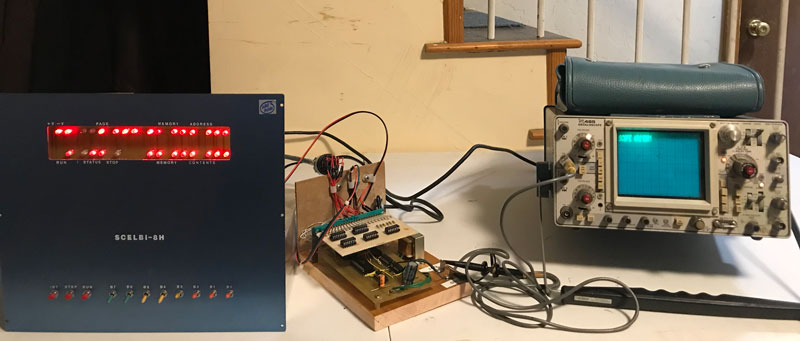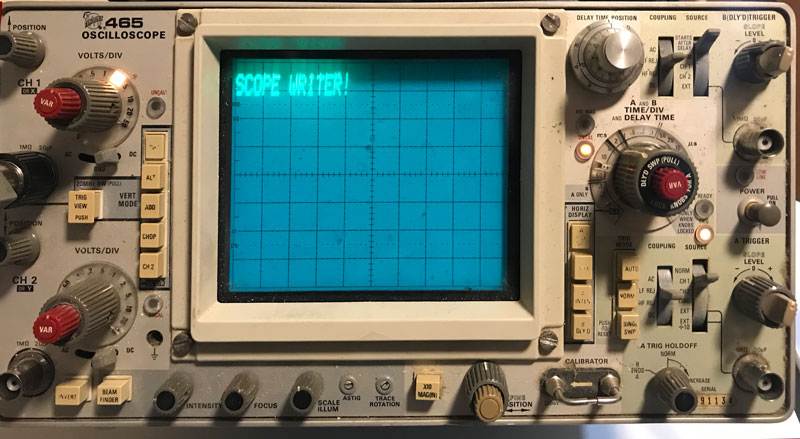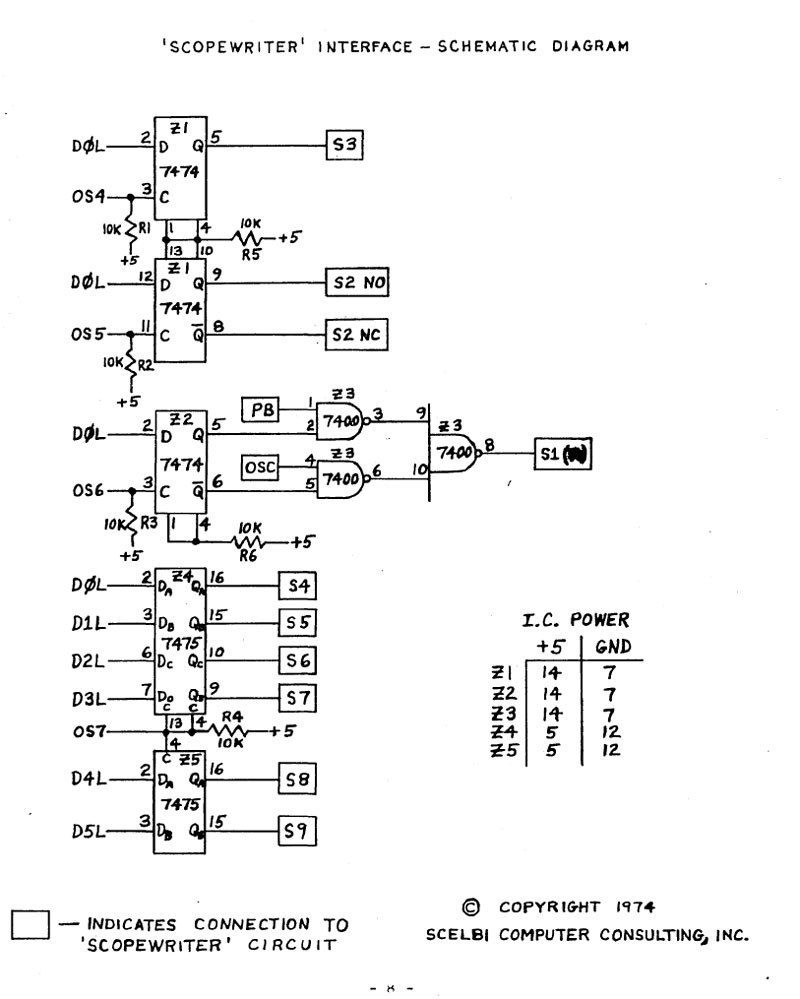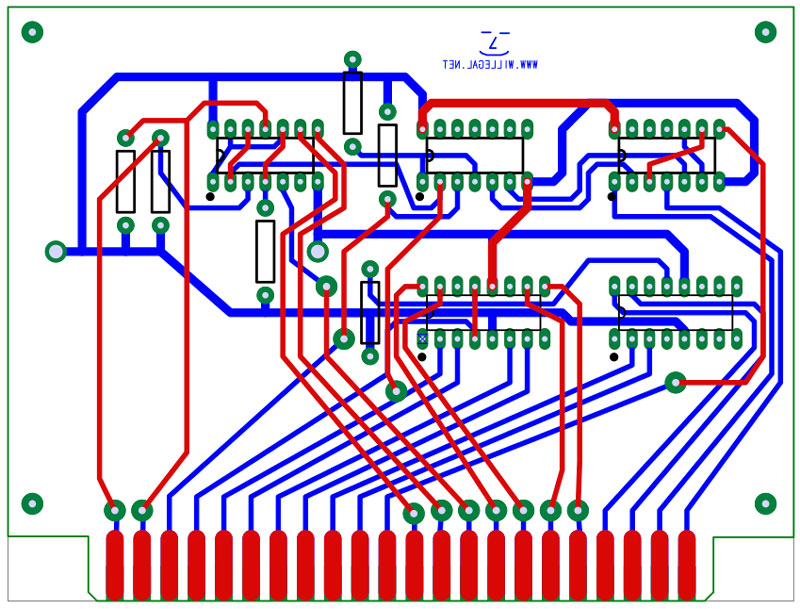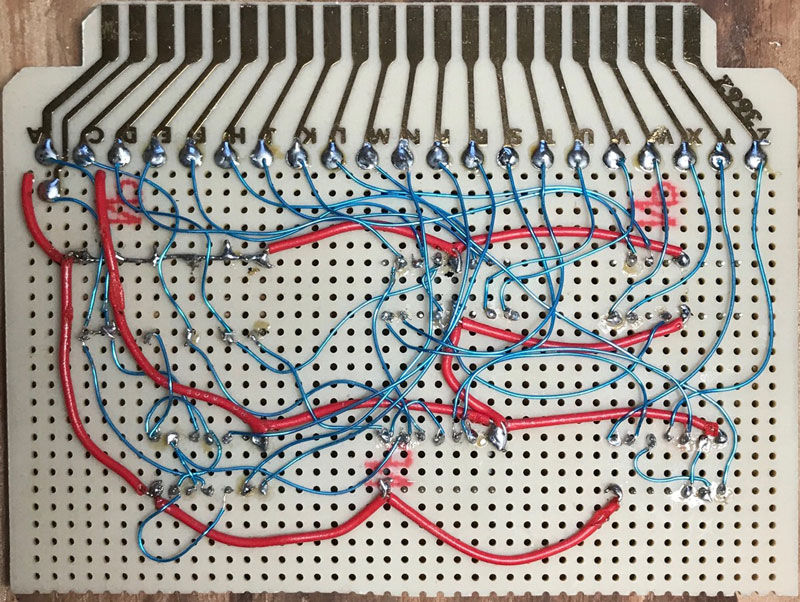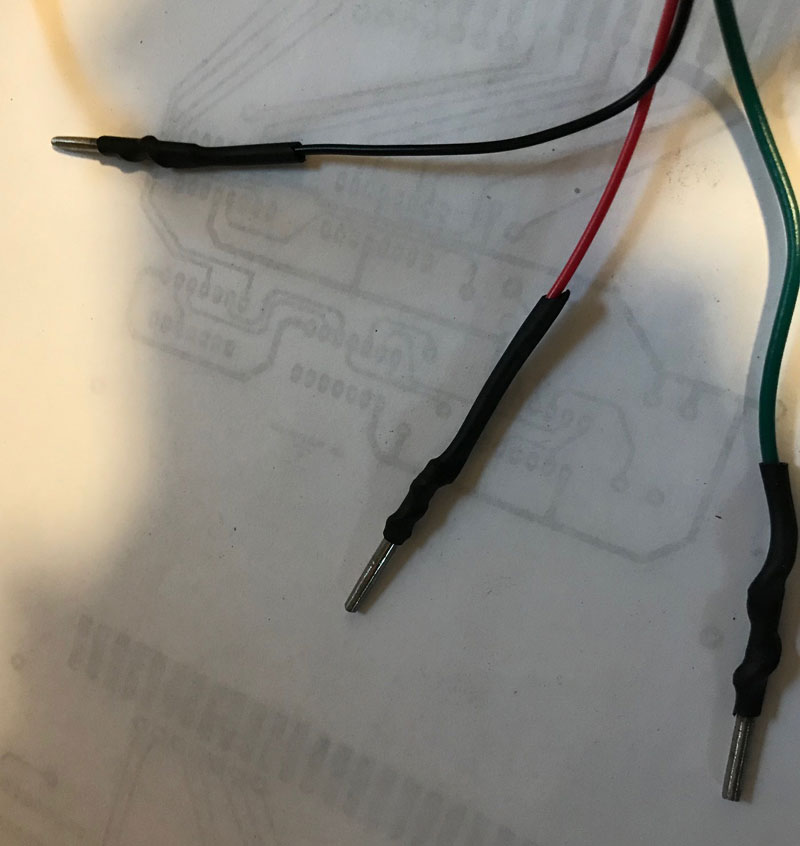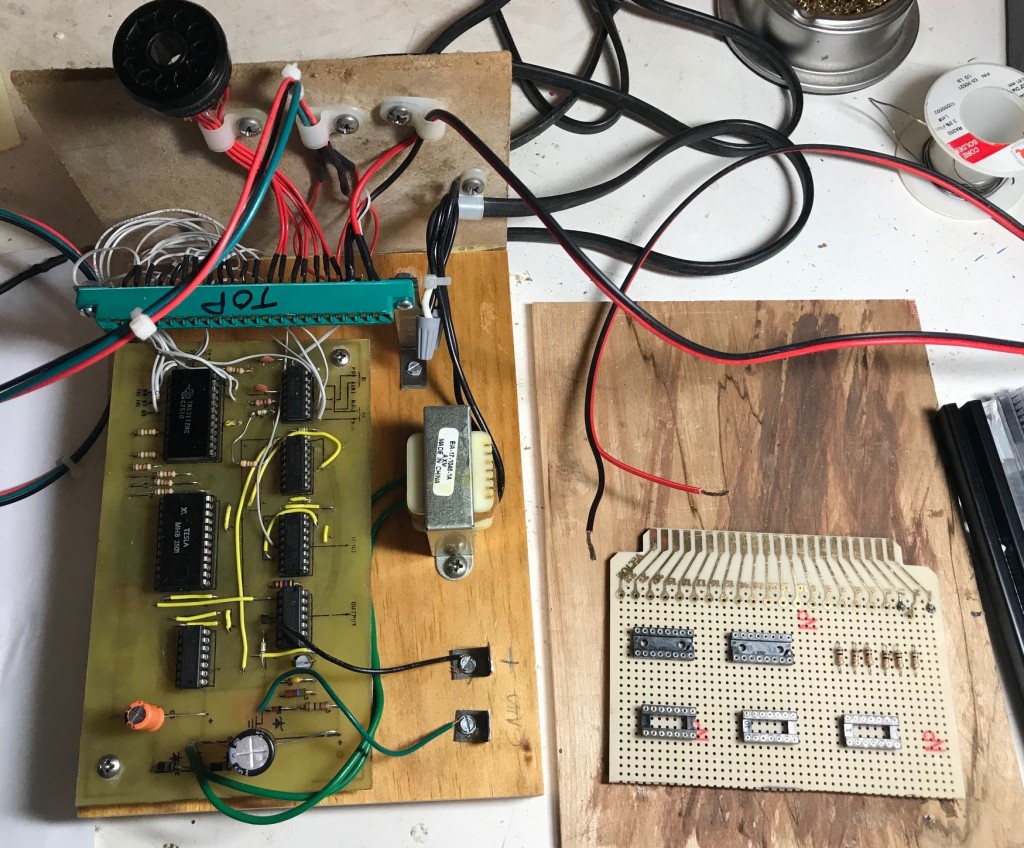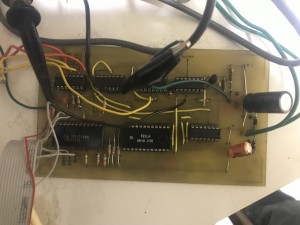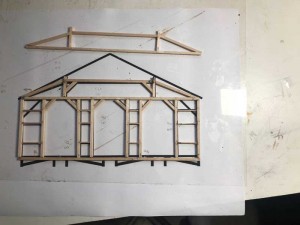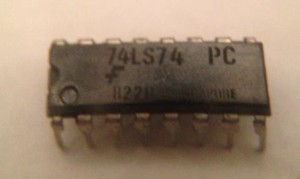Down below is a link to a modified MCMON that supports SCELBI keyboard input and Scopewriter output. This monitor rewrite took a lot longer to get working than I expected. I had all kinds of issues figuring out a register and memory allocation scheme that wouldn’t bloat the code to beyond 256 bytes. In the end, I managed to squeeze it down enough so that I actually have 5 free bytes for additional features or bug fixes.
I verified this monitor is functional by first running it out of SRAM, and finally, when I thought everything was working well, I burned a 1702 EPROM. I installed the EPROM on the modified SCELBI 1K SRAM memory board which has provisions for a single 1702 EPROM. In the past, I had the serial interface version of MCMON in that spot.
It turns out that the Scopewriter output is much easier to read than the SCELBI CRT interface. This clarity comes at cost, as it only has one line of output compared the the SCELBI CRT’s five. However, it’s pretty clear to me, that because of the vastly more complex design, that the SCELBI CRT interface couldn’t compete, once the Scopewriter came out.
I had to delete the serial bootstrap function when I ported the MCMON to the keyboard/scopewriter combination. Anyway, a keyboard bootstrap wouldn’t work that well anyway. You might as well use the built in monitor commands to load memory. Manually entering a bootstrap isn’t going to be the end of the world. I did a test by entering in the complete MCMON into one page while running it out of another page. MCMON is amazingly efficient in terms of keystrokes when it comes to reading and writing memory. I was able to successfully type in a working copy of the monitor in just a few minutes. Entering a boot loader shouldn’t be much of an issue.
One thing about these vintage computer projects, is that one project always leads to more. I now need to upgrade my OS/X SCELBI emulator to support the Scopewriter.
I’ll also need to come up some kind of demo application, that will run with only one line of output visible at a time and can run in less than 4K of memory. This will preferably be some kind of game or other entertainment mechanism. Maybe someone knows of a small version of Colossal Cave or a similar app floating around.
Oh yeah, then there is the need to put this interface in a nice project box…

